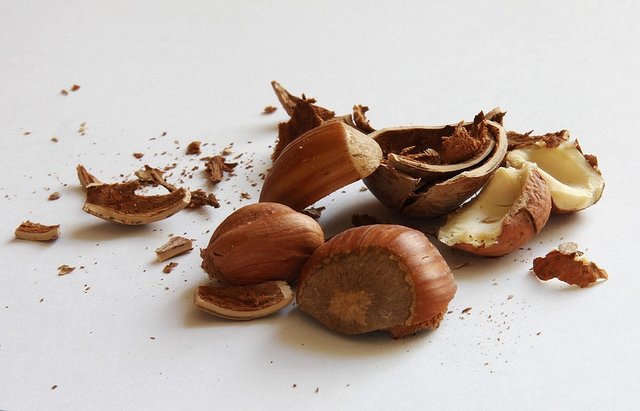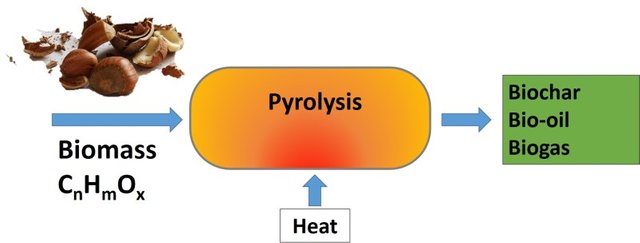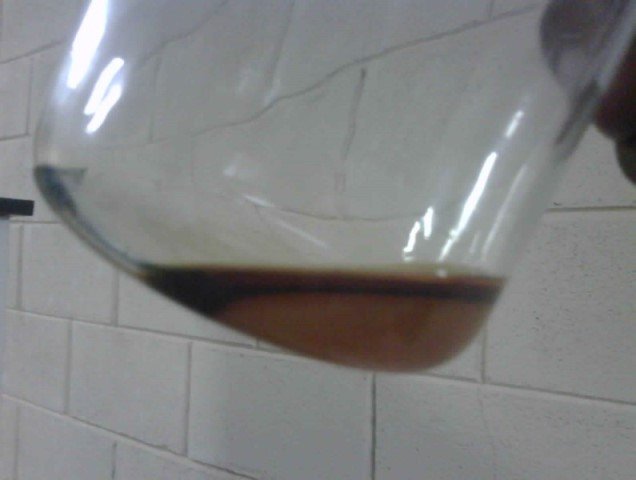Hazelnut shell pyrolysis as a source of raw material for bioproducts
We know that currently many researchers are constantly looking for new ways to produce energy in a sustainable way, and in this aspect the use of biomass has been the subject of many studies because it is a renewable source of energy, since thanks to several thermochemical methods, such as pyrolysis, it can be transformed into oil, synthesis gas and biochar; and particularly bio-oil is of great interest because it can be used to produce biofuels and other desired bioproducts.

Hazelnut shells can be used as biomass for energy and other products. Source: pixabay.com.
In this regard, a group of researchers from the Heilongjiang Academy of Agricultural Machinery Science in China recently published in the Journal for Renewable and Sustainable Energy their study of the physicochemical properties of wood vinegar and bio-oil produced by pyrolysis of hazelnut shells.
Currently, pyrolysis technology is of great importance for the development of fuels from biomass, since the oils produced from this raw material have great potential for use in the chemical and energy industries. Basically, pyrolysis is the thermal treatment of biomass in the absence of oxygen. On the one hand, the oil obtained is separated into two phases, a soluble brown liquid called wood vinegar and a dense dark brown or black liquid called tar. Synthesis gas rich in volatile organic compounds is also obtained and the residue is charcoal.

Biomass pyrolysis scheme. Design prepared in PowerPoint, contains a public domain image.
Wood vinegar has various uses in the agricultural field, as an insect repellent, fertilizer, coagulant or to control plant growth, while tar can be used as a heavy fuel for boilers. But the uses of both are closely linked to their chemical composition, which is determined by the properties of the raw material from which they are derived.
And this group of researchers were able to determine that the wood vinegar and tar obtained by subjecting hazelnut shells to thermal processes contained many phenolic substances, which prompted them to carry out a more in-depth investigation of their properties. Specifically, the objective of the research focused on the study of the effects of pyrolysis temperature on the characteristics of the wood vinegar and tar fraction produced in the bio-oil from hazelnut shell pyrolysis, paying special attention to the antioxidant activity of both products.
For the experiment, samples of hazelnut shells were collected, ground and sieved to a size between 75 and 380 μm, dried and characterized to determine that the samples contained mainly 73.08 wt.% volatile compounds and 22.82 wt.% fixed carbon, 3.47 wt.% moisture and 0.63 wt.% ash, furthermore, an analysis of their calorific value determined a value of 20.06 MJ/kg.
To carry out the pisolysis reaction, a tubular furnace type reactor was used, 20 g of sample were placed and a heating rate of 10 °C/min and a gas flow of 80 mL/min were selected, also controlling the temperature between various values between 400 and 1000 °C. The samples were then subjected to the treatment for 20 min.

Example of the liquid fraction obtained from biomass pyrolysis. Source: @emiliomoron.
The results showed that wood vinegar was the predominant bio-oil phase, representing between 83-91 wt.% of the bio-oil; the tar fraction being much lower, so it should be taken into account that moisture has a significant influence on the bio-oil yield. Likewise, temperature has much influence on the yield, favoring the fraction of wood vinegar as it increased; the maximum tar value was obtained at 900 °C, mainly attributable to the decomposition and volatilization of the hazelnut shell particles.
As for the composition of the wood vinegar, approximately 120 organic compounds could be identified, which shows us that the hazelnut shells have a complex composition, the main compounds found being phenols and acids, and in smaller proportion ketones, alcohols, ethers, aldehydes and esters. And in the tar it was the insoluble and viscous liquid fraction, and in this phase it was possible to identify approximately 200 organic compounds, with a composition very similar to that of the wood vinegar. And in both compounds it was determined that the antioxidant capacity is closely linked to the high phenol content in their composition.
This research is very important because it lays the foundations for new applications for bio-oils obtained from the pyrolysis of hazelnut shells, so that pyrolysis oils can be considered not only as a source of biofuels for boilers but also as raw material for the synthesis of many products of interest, especially for their content of antioxidant compounds such as phenols.
Thanks for coming by to read friends, I hope you liked the information. See you next time.

Greetings friend @emiliomoron, this process of the hazelnut shell reminds me of a similar process that is applied to the nut of the fruit of the oil palm or African palm, from which is extracted a palm kernel oil that is widely used in the food industry, excellent explanation that you share with us.
Very interesting friend @emiliomoron, another source of green energy that would add to the different options currently being used, unfortunately there are many economic interests that prefer to continue maintaining the economic scheme supported by the use of fossil fuels.
A pity that governments do not put a little more effort to develop more and more this type of technology in favor of the preservation of the environment.
Cheers bro
Hello @emiliomoron, What great information I find today in your post, I did not know that the nut shells could be subjected to the pyrolysis process and be usable, in fact I did not know the existence of wood vinegar, I think that in the future there will be more use of this type of waste.
Although I still cannot imagine where there would be a significant source (large amount) of nut shells to industrialize this process.
See you
Greetings @tocho2, I believe that much research will continue to be developed to take advantage of biomass and produce products in a sustainable way, the truth would have to review what type of industry generates enough of this waste to industrialize the process.